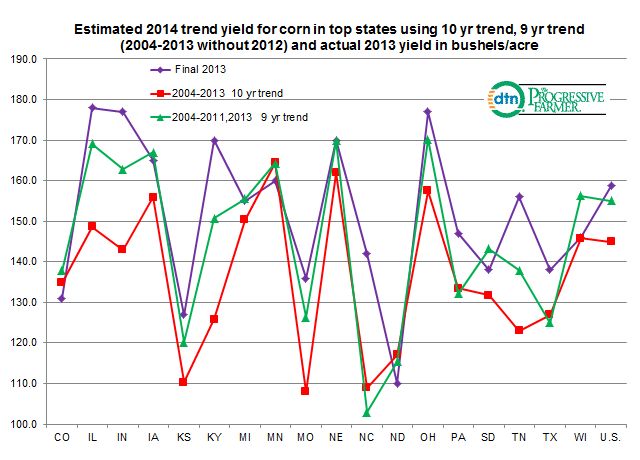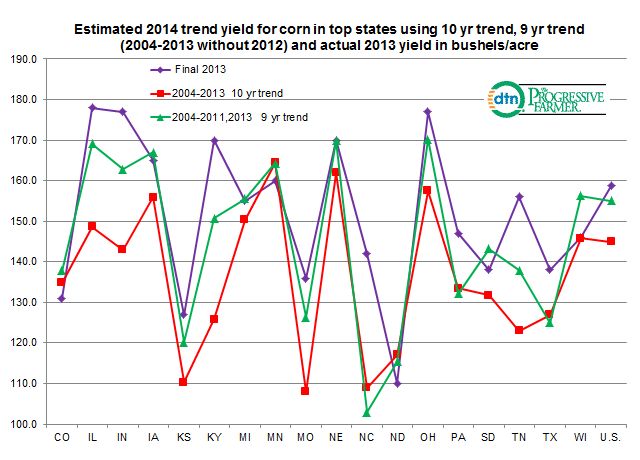Fundamentally Speaking
Estimated 2014 Trends for Corn
Itwill be quite interesting what yield the USDA uses for the 2014 U.S. crop at their Ag Outlook conference next month and how that will be revised in the May, June, and July 2014 WASDE reports.
A recent paper from the University of Illinois on the USDA’s estimates and forecasts for corn and soybeans notes that until recently the Feb Ag Outlook and May through July WASDE corn yield estimates were based on a simple 20 year linear trend.
In recent years, some modifications have been added including an adjustment for mid-May planting progress and last year variables added for June temperatures and precipitation.
P[L1] D[0x0] M[300x250] OOP[F] ADUNIT[] T[]
Still, a linear trend is what is most often used so along these lines this graphic shows the estimated 2014 trend yield for corn in the top 18 growing states using 2004-2013 data with and without the disastrous 2012 results.
The actual 2013 yield is also plotted. 2012 results were so poor that in 13 of the 18 states and the U.S., the ten year 2004-2013 trend is lower than the nine year trend (2004-2013 minus 2012), often by a large margin.
The calculated 2014 U.S. trends are respectively 145.0 and 155.0 bushels per acre, quite a bit lower than the 160-164 bpa range that we have heard is being used in early season 2014-15 corn balance sheets.
Using linear trends for yield and harvested acreage for the top states and summing their production as a percent of total U.S. output results in a calculated yield of 153.2 for the U.S.
In the ongoing debate about what constitutes a useful trend yield estimate, questions arise as to what is the proper time range and what to do about particularly good or bad years.
While the calculated 9 and 10 year trend estimates may be too low, trade participants have acknowledged certain factors that have constrained yield improvements in recent years.
This includes the spate of summer heat and dryness over the past decade resulting in short crops, the trend toward continuous corn plantings since the big renewable fuels boom, and perhaps the increase in plant populations resulting in reduced biomass (smaller ears).
(KA)
© Copyright 2014 DTN/The Progressive Farmer. All rights reserved.






Comments
To comment, please Log In or Join our Community .